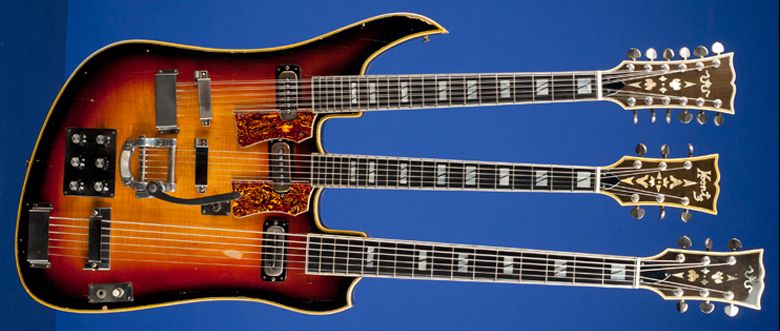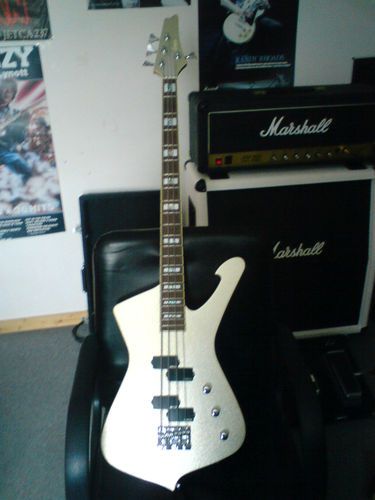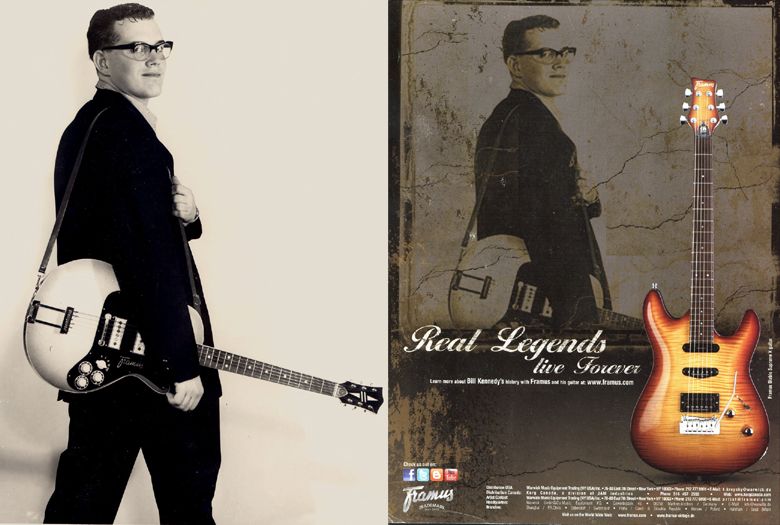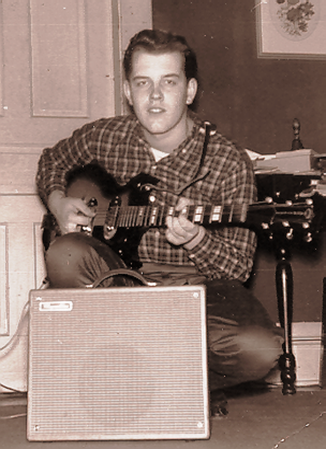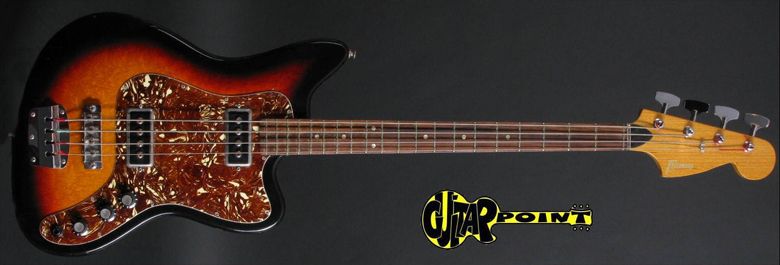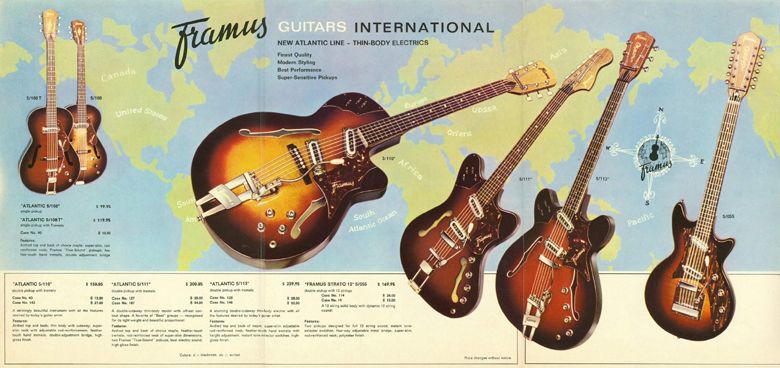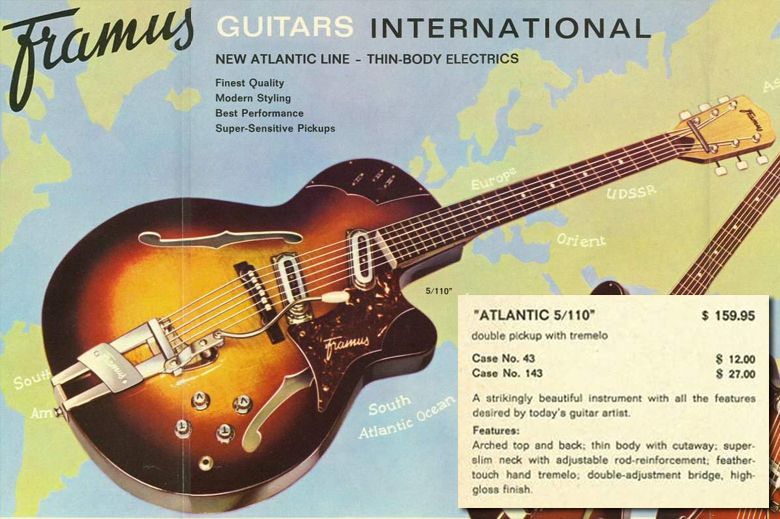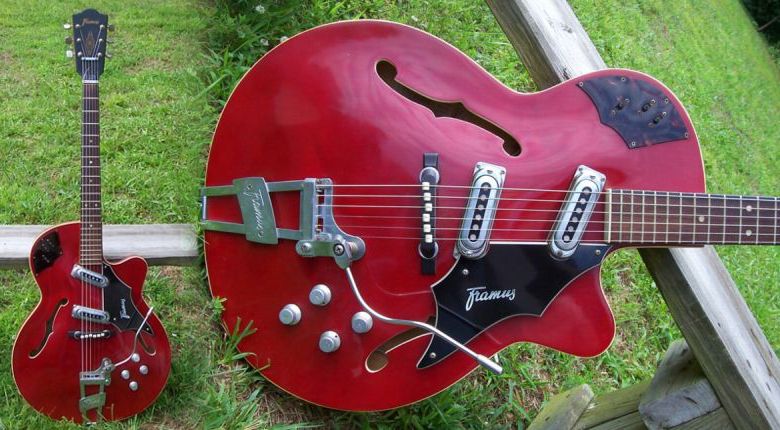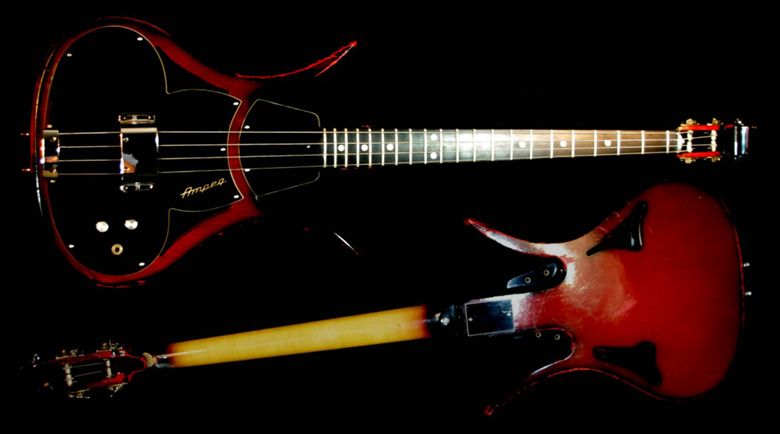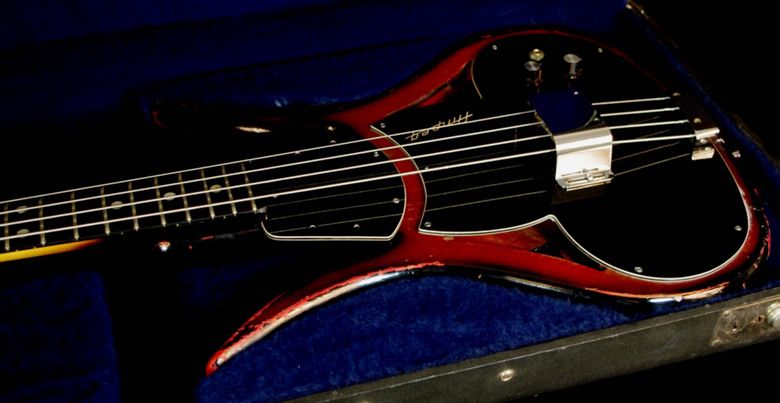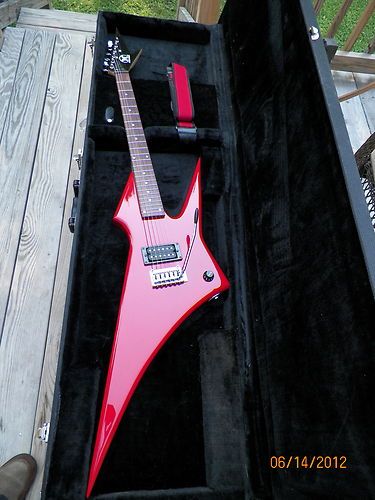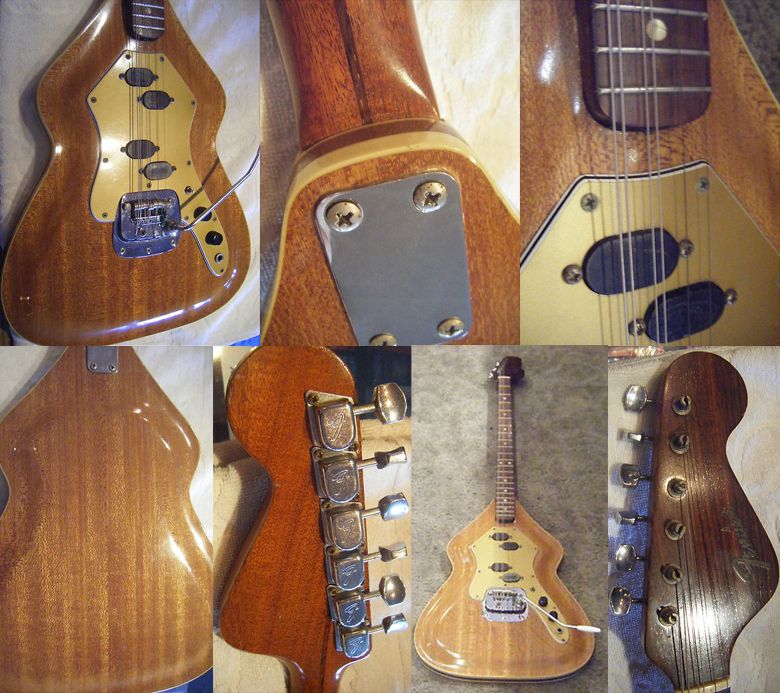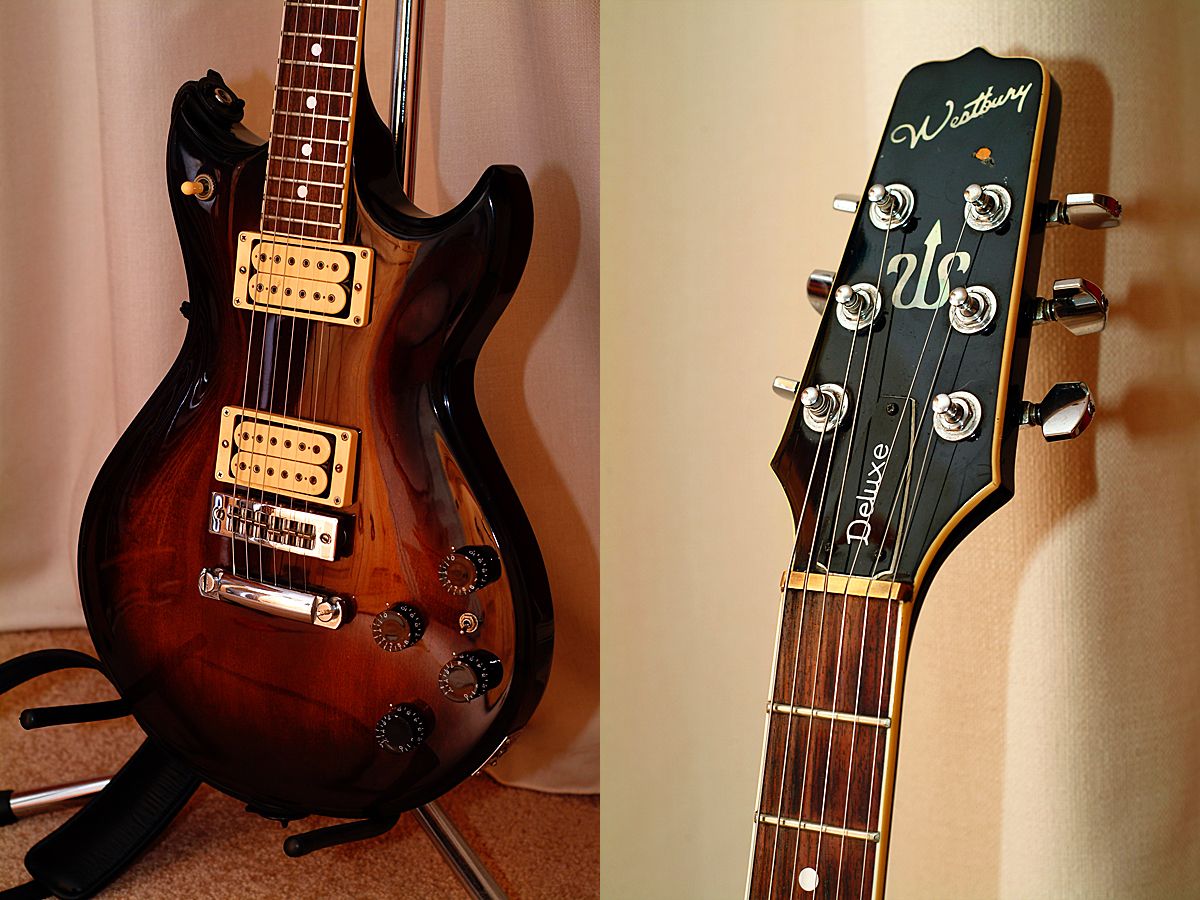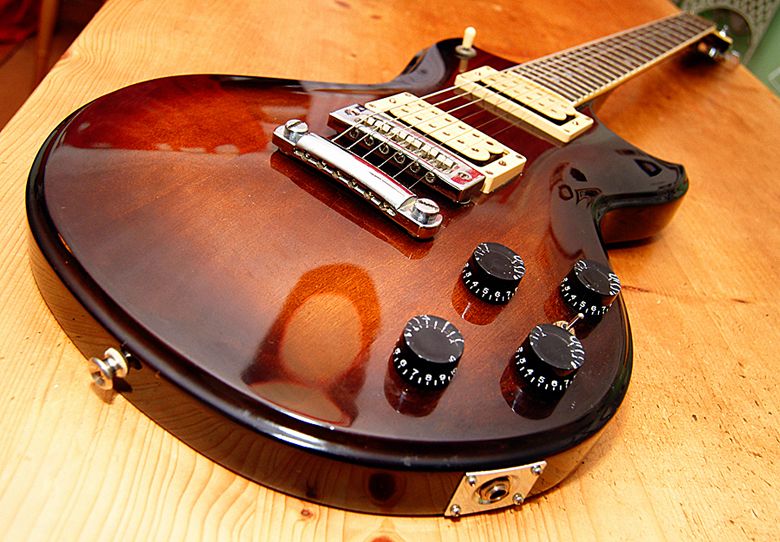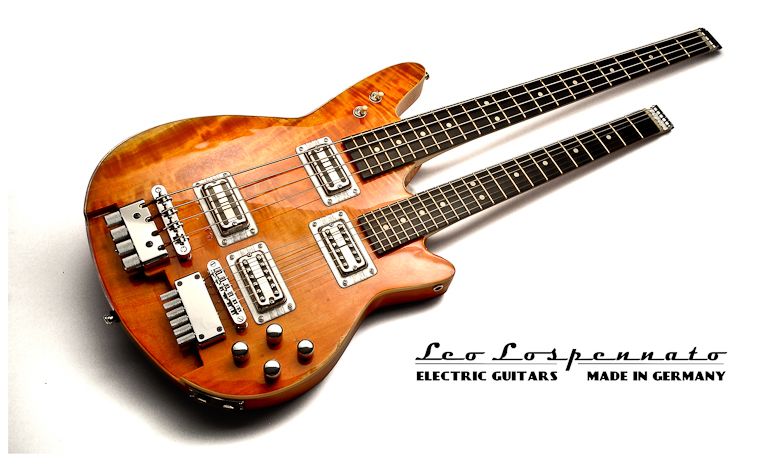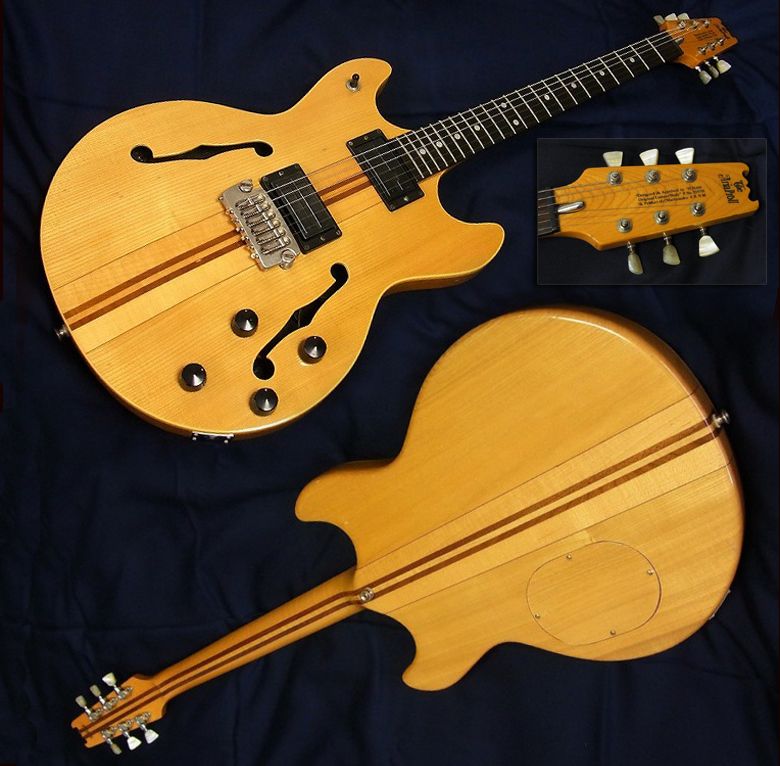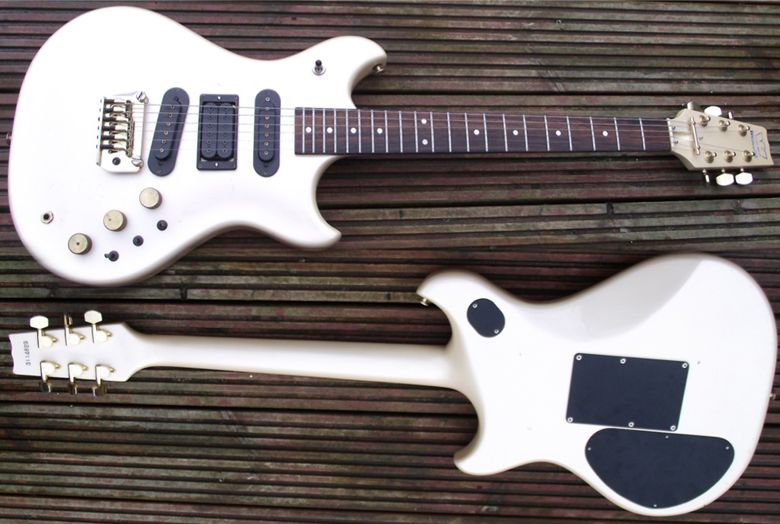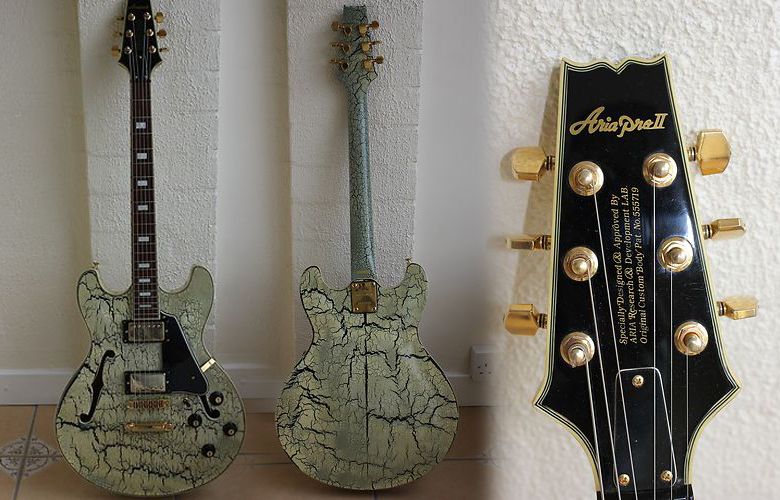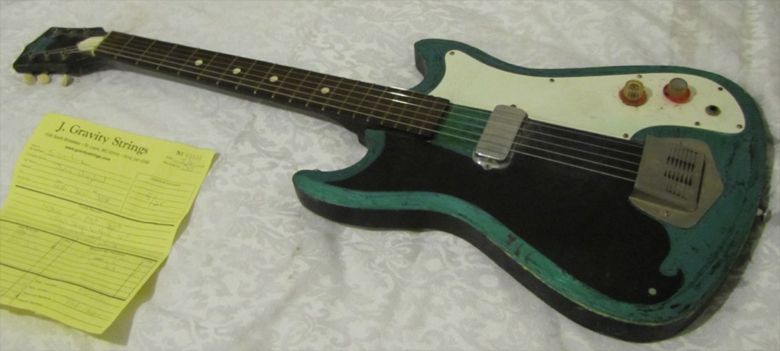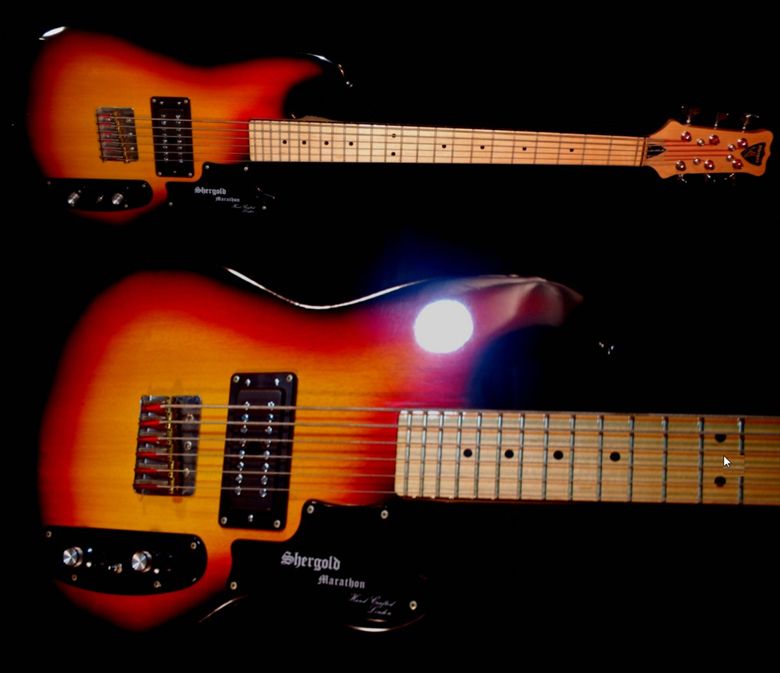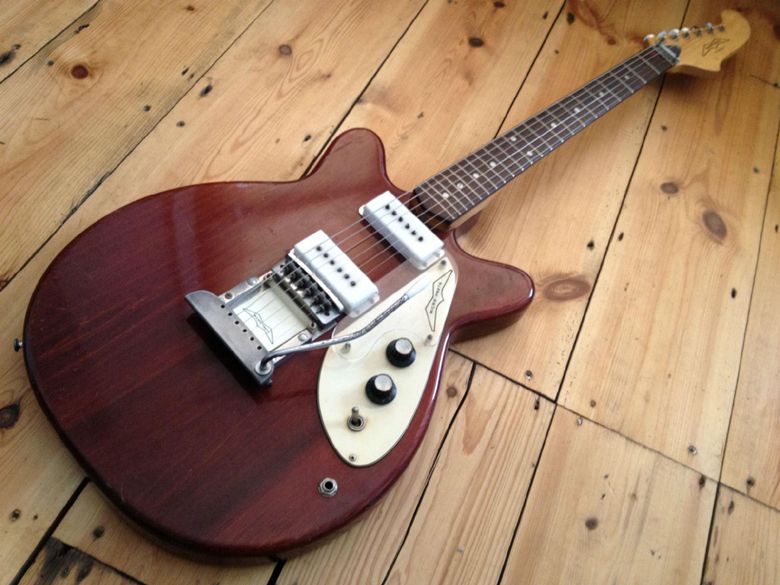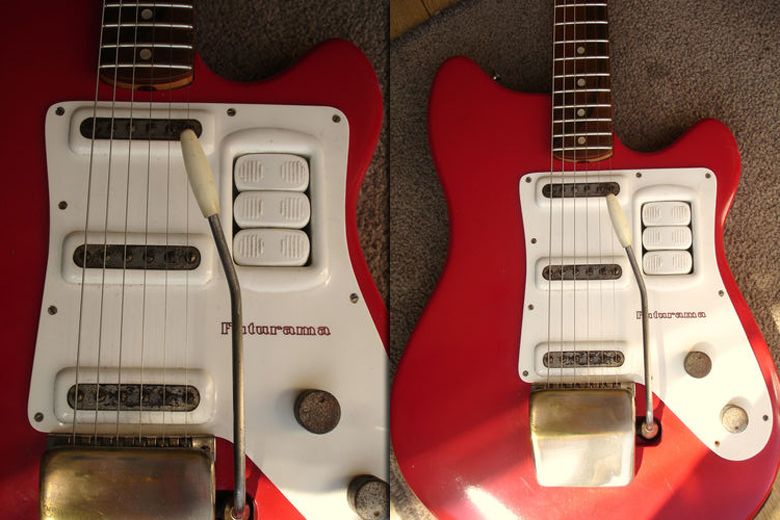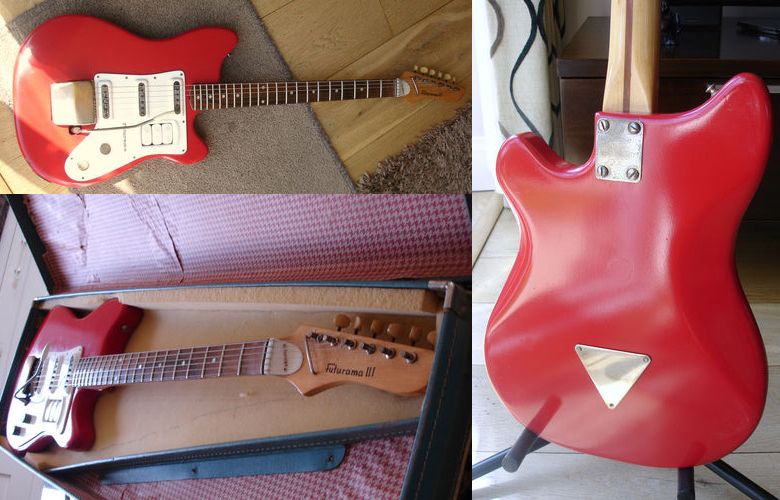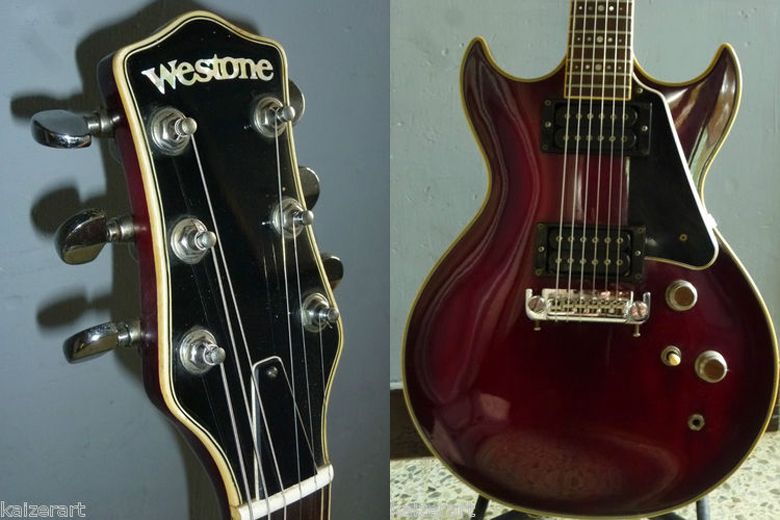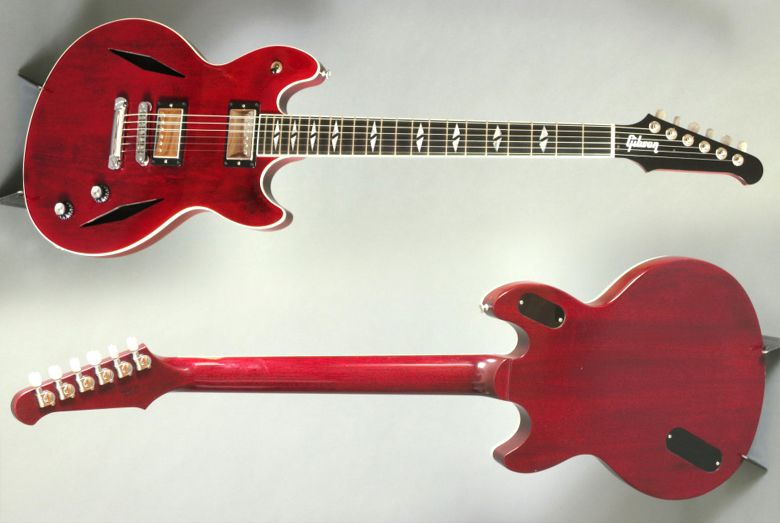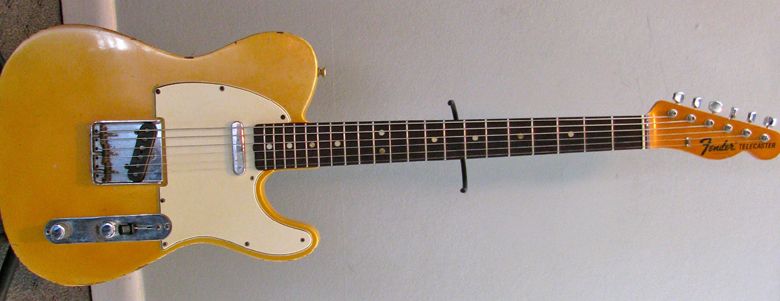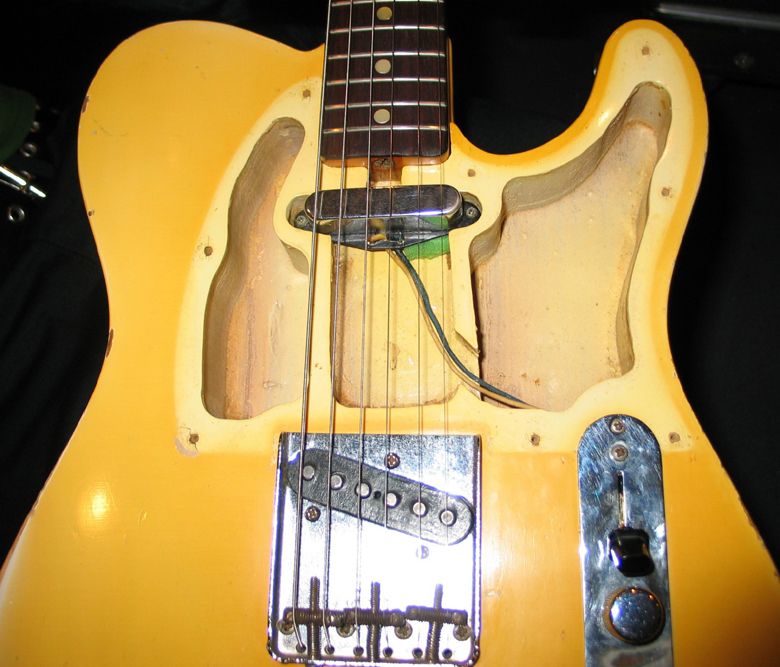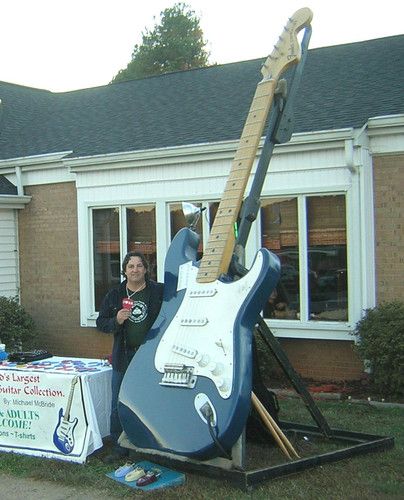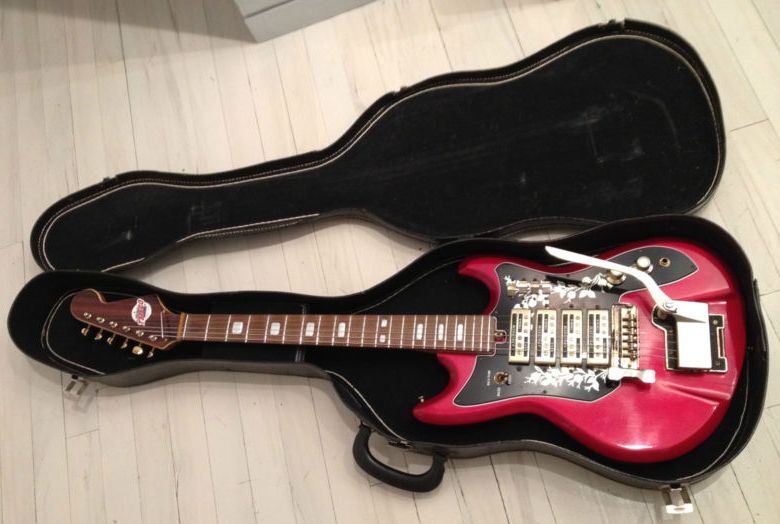I'll allow the extensive description on Vintage & Rare to give you the necessary info about the above-pictured beast:
I have to wonder, who would ever need such a guitar? The only realistic scenario would be when one person needs to perform a song which requires them to play 6-string guitar, 12-string guitar and bass VI all within the same song. I can't imagine that scenario arises very often, and would probably require a song to be especially written for the instrument. Nevertheless, it's an interesting beastie and worthy of inclusion here on Guitarz.This is a one-of-a-kind Custom Triple-neck guitar was specially built by New York Luthier Sam Koontz between 1965 and 1967. Unique triple-cutaway, multi-bound flamed maple, chambered body with 'Florentine' cutaways measuring 19.50 inches in width and just under 1 3/4 inches in thickness. This 'monster' guitar weighs a healthy 19.20 lbs (definitely not for a six-stone weakling) and has three (bolt-on) one-piece mahogany necks. All three necks have individual Grover 'Rotomatic' tuners with kidney-shaped metal buttons. The three headstocks are all multi-bound with black laminate faces. The six-string guitar (in the center) has "Koontz" and a nine-piece decoration all inlaid in mother-of-pearl. The twelve-string and the six-string bass necks just feature the nine-piece decoration. All three necks have 'dome' shaped black plastic truss-rod covers, each with two screws.Each neck is secured by four screws. The six-string neck has a nut width of just under 1 5/8 inches and a medium-to-thick profile. The twelve-string neck has a nut width of 1 13/16 inches and a medium-to-thick profile. The six-string bass neck has a nut width of just under 1 15/16 inches and again a medium-to-thick profile. Each of the necks has a bound ebony fretboard with pearl 'split-block' position markers. The six and the twelve-string have a 'zero' + 20 jumbo frets and a scale length of 24 3/4 inches. The six-string bass has a 'zero' + 15 jumbo frets and a scale length of 34.00 inches.Each neck has a specially wound Koontz pickup in the neck position. The six and twelve string pickups with six individual pole-pieces, the six-string bass pickup with a single 'blade' bar. Six controls (three volume and three tone) all mounted on a metal plate behind the Bigsby tailpiece on the six-string guitar. 'Rickenbacker' style seven-sided black plastic control knobs with plain metal tops. Three-way neck selector switch mounted between the six-string and the six-string bass. Three-way 'bass-boost' switch on the six-string bass. Two separate four-layer tortoiseshell over white plastic pickguards, each secured by two screws. All three guitars have specific Koontz bridges with individually adjustable metal saddles and metal covers.The six-string guitar (in the center) has a 'Horseshoe' style Bigsby vibrato tailpiece unit. The six-string bass and the twelve string guitar have specific metal fixed tailpieces, each secured by five screws and each with a metal cover (secured by four screws). There are some areas of wear on the body, especially on the back of the six-string where there is a fairly large area of surface loss. There are also some small areas of surface loss on the sides of the body. The top and back of the body are a wonderful three-tone sunburst with quite dazzling 'flame'.
It could be yours for $13,500 via Vintage & Rare.
G L Wilson
© 2012, Guitarz - The Original Guitar Blog - now in its 10th year!

